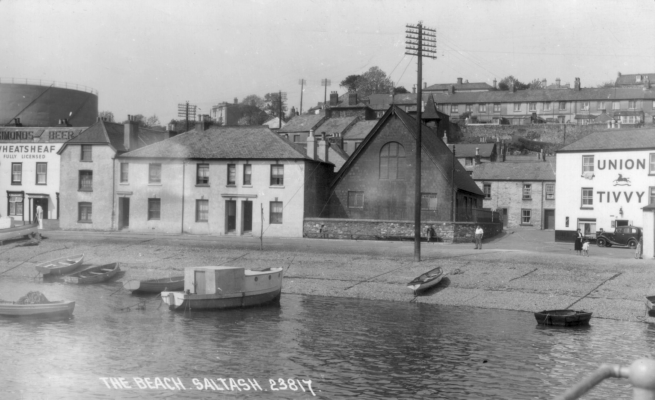Saltash History and Heritage
Saltash Waterside
The waterside remained a close community where ferrymen, boatmen, fishermen and women continued to live in the tightly packed streets of houses, many built in the sixteenth century. Further housing was required and with the new road open, cottages were built behind Sand Quay.
There were three wharves north of Brunel’s bridge, New Wharf, Commercial Wharf and Ashtor Wharf as well as Clatworthy’s Quay, a pontoon and two slips. Commercial Wharf was used by the Saltash, Three Towns & District Steamboat Company Limited’ for maintenance and the fitting out of its boats.
However, river-based industry was in decline; Nicholas Westcott’s boat yard (where the Livewire Youth Centre is) closed, and the steamboat yard was taken over by the gas company. The ferry had lost some of its trade to Torpoint and the much improved train service.
By the end of WWI the waterside was no longer a hive of industry but its popularity as a tourist destination continued. In 1906 the Rustic Tea Gardens were created on the site of the old quarry near Sand Quay, and in 1931 plans were drawn up for a swimming pool which opened in 1936 adjoining Brunel Green (to the north of New Wharf).
On the waterside there was a small boat-building revival which lasted for around fifteen years, and other small industries opened in the area, including a motor company and Daw’s Creamery, established in 1932 on the site of the old Rustic Tea Gardens. The creamery closed in 1973.
The old Mission Hall which was between the Union Inn and the Wheatsheaf Inn and had not been used for regular worship since 1941 was leased for a payment of one shilling per annum and became the Waterside Boys Club.
The building of the road bridge which opened in 1961 required the demolition of most of the north side of Lower Fore Street. The waterside area was demolished between 1957 and 1961


